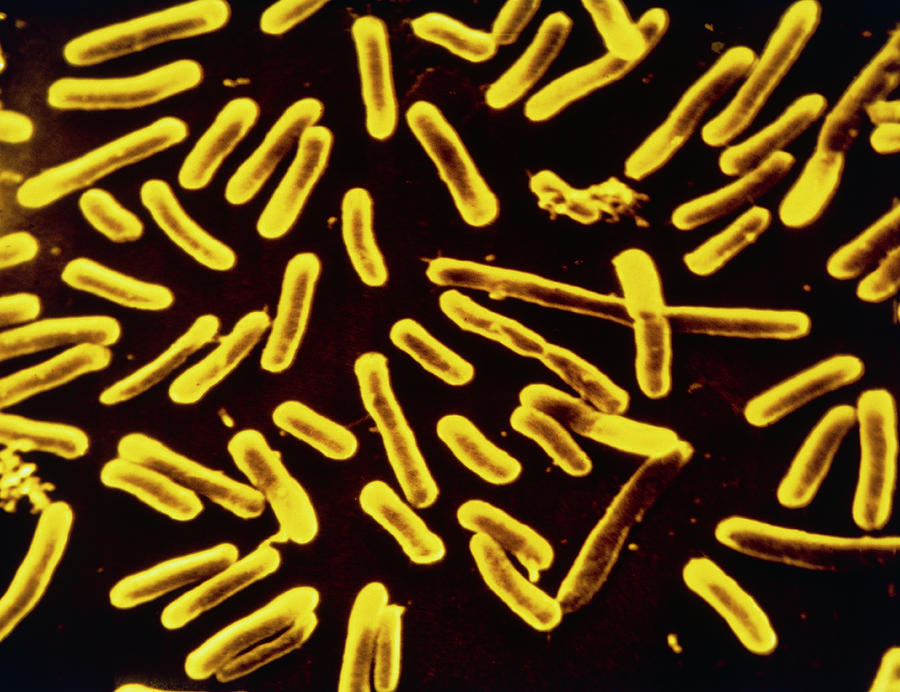
Yersinia enterocolitica is a bacterial species in the family Enterobacteriaceae that most often causes enterocolitis, acute diarrhea, terminal ileitis, mesenteric lymphadenitis, and pseudoappendicitis but, if it spreads systemically, can also result in fatal sepsis.
Human clinical Y enterocolitica infections ensue after ingestion of the microorganisms in contaminated food or water or by direct inoculation through blood transfusion.
Y enterocolitica is potentially transmitted by contaminated unpasteurized milk and milk products, raw pork, tofu, meats, oysters, and fish. [14, 15] Outbreaks have been associated with raw vegetables; the surface of vegetables can become contaminated with pathogenic microorganisms through contact with soil, irrigation water, fertilizers, equipment, humans, and animals.
Pasteurized milk and dairy products can also cause outbreaks because Yersiniacan proliferate at refrigerated temperatures.
Animal reservoirs of Y enterocolitica include swine (principle reservoir), dogs, cats, cows, sheep, goats, rodents, foxes, porcupines, and birds.
Reports of person-to-person spread are conflicting and are generally not observed in large outbreaks. Transmission via blood products has occurred, however, and infection can be transmitted from mother to newborn infant. Fecal-oral transmission among humans has not been proven.
Symptoms of Y enterocolitica infection typically include the following:
Diarrhea - The most common clinical manifestation of this infection; diarrhea may be bloody in severe cases
Low-grade fever
Abdominal pain - May localize to the right lower quadrant
Vomiting - Present in approximately 15-40% of cases
The patient may also develop erythema nodosum, which manifests as painful, raised red or purple lesions, mainly on the patient’s legs and trunk. Lesions appear 2-20 days after the onset of fever and abdominal pain and resolve spontaneously in most cases in about a month.
The following tests can be used in the diagnosis of Y enterocolitica infection:
Stool culture - This is the best way to confirm a diagnosis of Y enterocolitica ; the culture result is usually positive within 2 weeks of onset of disease
Tube agglutination
Enzyme-linked immunosorbent assays
Radioimmunoassays
Imaging studies - Ultrasonography or computed tomography (CT) scanning may be useful in delineating true appendicitis from pseudoappendicitis
Colonoscopy - Findings may vary and are relatively nonspecific
Yersiniosis is usually either self-limited or is responsive to therapy; however, reinfection is possible. Most patients with Y enterocolitica infection are symptomatic; however, asymptomatic carriage may occur. Death is uncommon, but patients with significant comorbidities are at risk for Y enterocoliticabacteremia, which carries a case fatality rate of 34-50%.
A national, registry-based study of 52,121 patients in Denmark reported estimates for the risk of developing severe, hospitalization-requiring complications and long-term sequelae up to 1 year after infection with 5 common bacterial gastrointestinal pathogens. Of the 3922 cases of Y enterocolitica infection reported, 368 required hospitalization. [29]
A report from the CDC stated that in 2010 (preliminary data), of 159 Yersiniainfections in the United States, 52 required hospitalization and 1 resulted in death.
Various manifestations of Y enterocolitica infection have been reported, including the following :
Enterocolitis
Pseudoappendicitis
Mesenteric adenitis
Reactive arthritis - Can last 1-4 months
Erythema nodosum
Septicemia
Pharyngitis
Dermatitis
Myocarditis
Glomerulonephritis
Joint aspiration in cases of Yersinia- associated reactive arthropathy
Iron is an essential growth factor for the organism, and iron overload (eg, chronic hemolysis, hereditary hemochromatosis) is associated with an increased risk of systemic disease. Deferoxamine therapy also increases susceptibility to Y enterocolitica disease.
Care in patients with Y enterocolitica infection is primarily supportive, with good nutrition and hydration being mainstays of treatment.
First-line drugs used against the bacterium include the following agents:
Third-generation cephalosporins
Trimethoprim-sulfamethoxazole (TMP-SMZ)
Tetracyclines
Fluoroquinolones - not approved for use in children under 18 years
Aminoglycoside